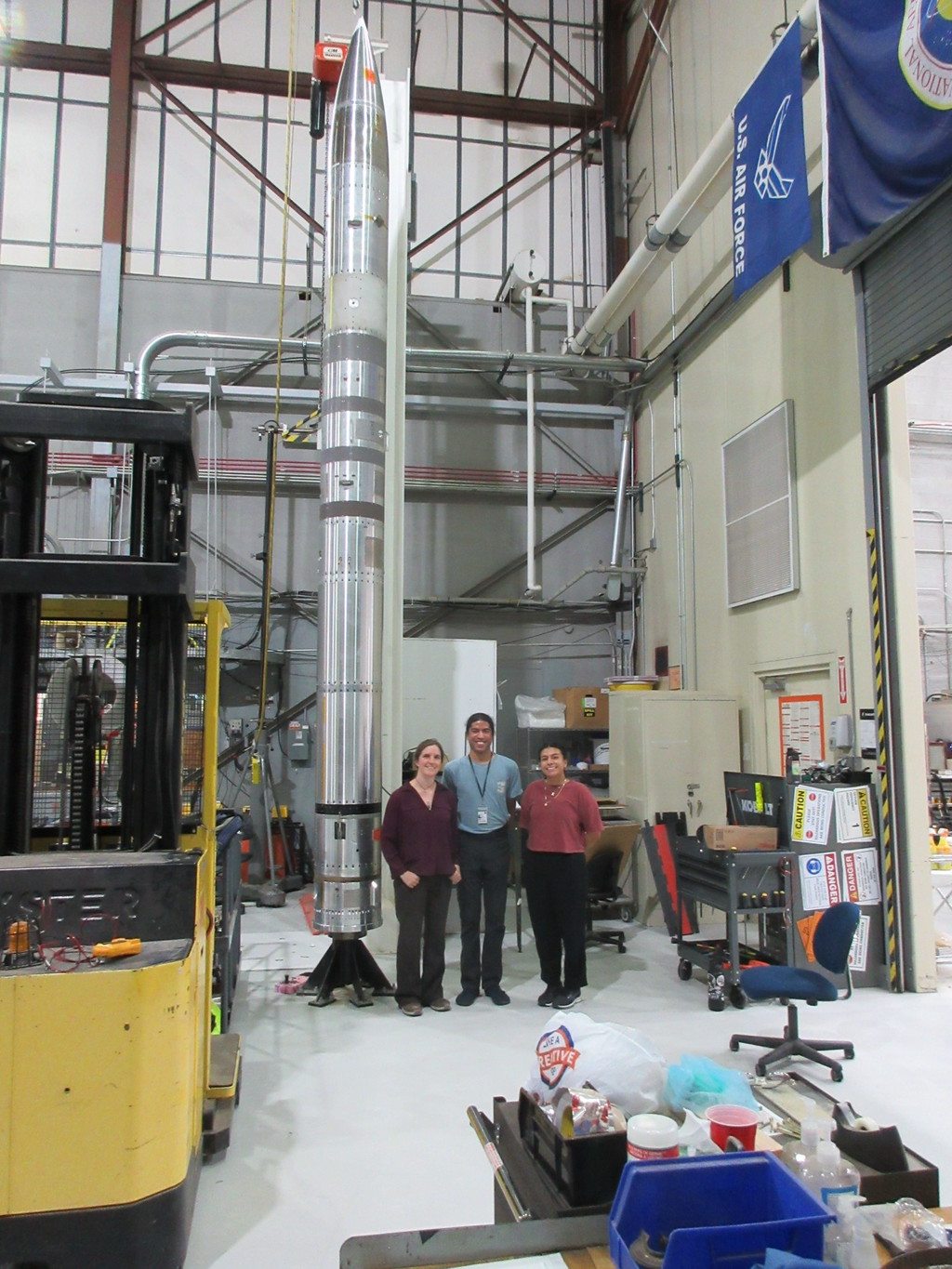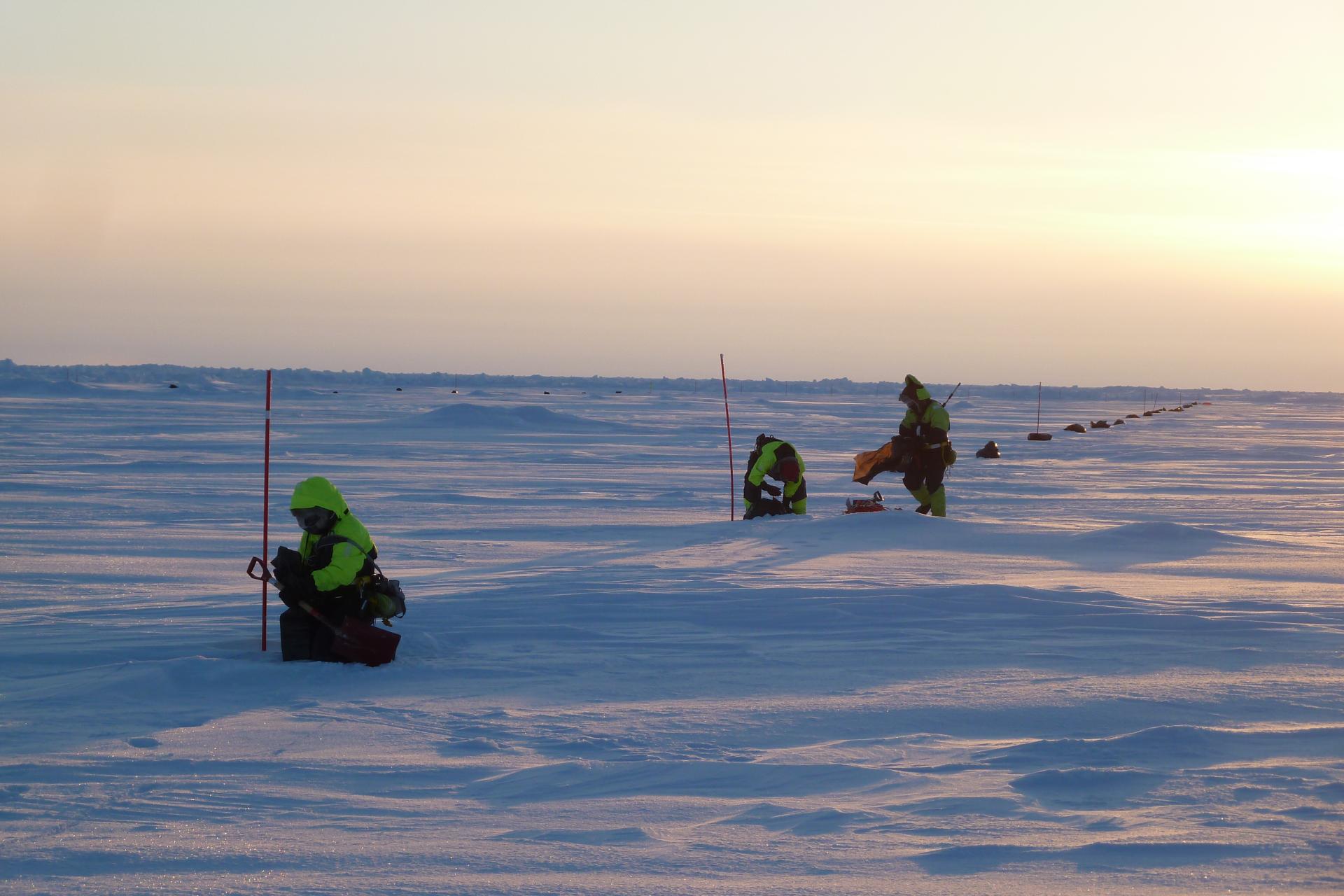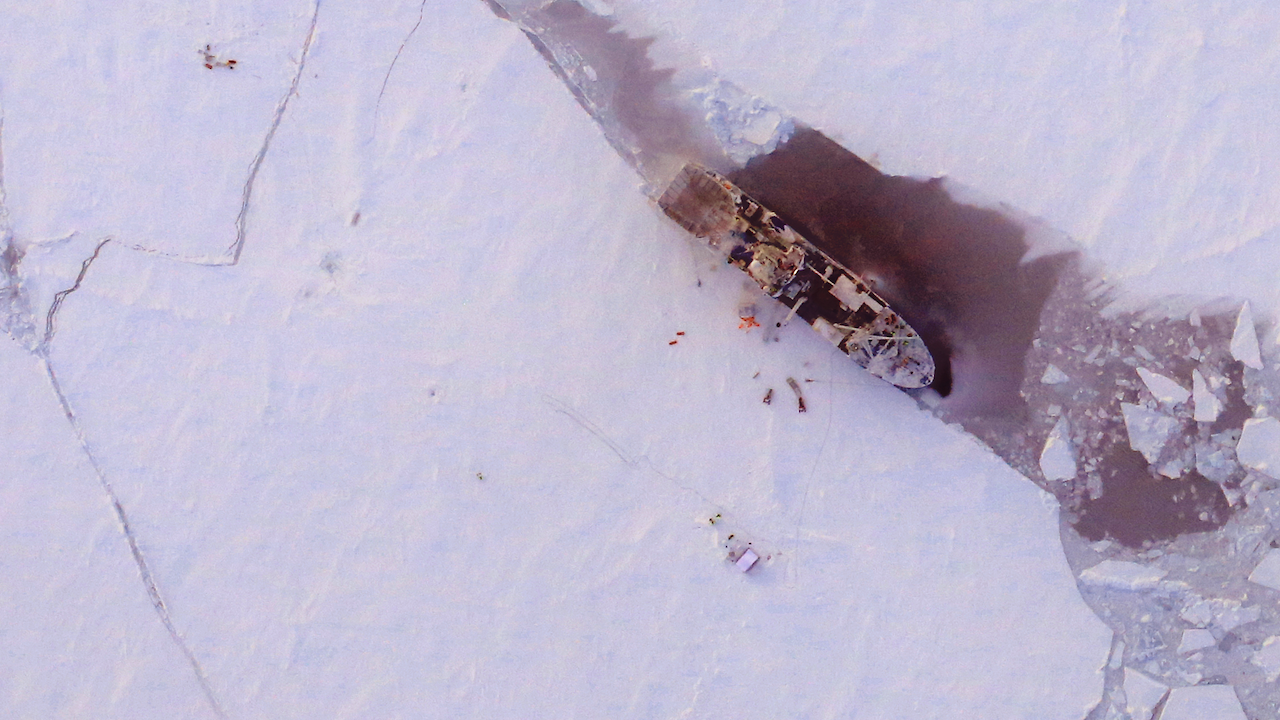Studying sea ice in the Fram Strait, a passage between Greenland and Svalbard that is the main gateway for Arctic sea ice into the open ocean, is not easy. In this area, not only does ice flow southward quickly – at the same time, warmer ocean waters melt and thin it from below, making it easier for waves to break the ice into smaller floes. This dynamic, unstable environment makes it hard for scientists to set camps on the sea ice and collect direct measurements. In turn, scarce field data means that remote measurements of sea ice in the Fram Strait have few sources of validation.
Credits: NASA/Goddard
› Download video
Enter the collaboration between an expedition led by the Norwegian Polar Institute, called the Norwegian Young Sea Ice Cruise (N-ICE2015), and Operation IceBridge, NASA’s biannual airborne survey of polar sea and land ice.
The players: at sea, a Norwegian research vessel, the R/V Lance, locked into the sea ice pack, quickly drifting along with it. In the sky, NASA’s C-130 aircraft, loaded with radar and laser instruments.
The objective, which was accomplished during Operation IceBridge’s March 19 inaugural flight of the 2015 Arctic campaign, was for the C-130 to overfly a survey field located on an ice floe next to the vessel, while taking remote measurements of snow and sea ice thickness. The survey field was almost simultaneously measured from the ground by the ship-bound researchers, so that scientists can compare both datasets in coming months.
Win-Win Collaboration
“The motivation for N-ICE2015 is to learn about the younger, thinner, and faster moving ice cover in the Arctic, to better understand climate processes and to improve modeling and remote sensing observations,” said Gunnar Spreen, an NPI sea-ice physicist who is currently onboard the Lance. “The sea ice and snow thickness measurements taken by IceBridge will allow upscaling the detailed N-ICE2015 ice and snow measurements, which for example include information about the ice stratigraphy and snow grain size distribution.”
“For IceBridge, this will help us to understand the performance of our own instruments much better, along with evaluating the IceBridge estimates of snow depth and sea ice thickness against direct, on-ice observations,” said John Sonntag, IceBridge’s Field Team Lead.
In early January and late February 2015, the Norwegian research vessel Lance, escorted by an icebreaker, drove into the Arctic sea ice north of Svalbard. Once there, the Norwegian research vessel let itself get frozen into place and is passively flowing with the sea ice toward the Fram Strait. Whenever the ship leaves the ice edge, an icebreaker will reposition it deeper into the icepack. The project will last until the summer.
Long Time In The Making
NASA’s overflight of the ship lasted only minutes, but its planning spanned over months of hard work and international collaboration.
“This particular collaboration was on our radar screen this time last year, that’s when we started to have our first conversations to see if we could make it work,” said Jackie Richter-Menge, IceBridge science team co-lead and sea ice researcher with the U.S. Army Corps of Engineers Cold Regions Research and Engineering Laboratory in Hanover, New Hampshire. “It was about a year of ‘I know that you’re out there, I’m going to ask you on a date, I promise I’m going to ask you.’ Then the time for the date comes and it becomes more of a rapid-fire, detailed conversation.”
A representative of the Norwegian Polar Institute attended an IceBridge working group meeting held in January 2015 at NASA’s Goddard Space Flight Center in Greenbelt, Maryland, to discuss the specifics of the overflight.
First and foremost, both teams had to ensure that the plane would be able to find the drifting ship. Again, not an easy task.
Before the N-ICE2015 expedition started, the NPI team looked at sea ice drift trajectories in the Fram Strait for the past decade, to get a sense of where the ocean currents and winds would most likely take them.
“Based on that information, we had some expectations but we didn’t know what the drift would be for a particular year,” said Spreen. “Our general drift direction has so far been in agreement with what we expected. However, a strong storm at the beginning of February caused a very fast southward drift of the ice camp. We then decided to move the camp back up further north. Now we are again on a expected drift trajectory, drifting mainly south-westward.”
The ship frequently updates its position on a website via an Iridium link. IceBridge kept close tabs on said website the days prior to the flyover, with two people monitoring the updates: one in Thule, Greenland, and the other one in Wallops, Virginia. The duplication was needed to avoid a possible Internet drop.
On top of that, the teams exchanged Iridium telephone numbers from the ship, the plane, and a helicopter operating in the area of the Lance.
“We have agreed on radio channels, on a protocol for when the NASA airplane contacts the ship and on who are the points of contact,” said Spreen, two days before the overflight.
Also speaking days before the mission, Sonntag said: “Each of those people will send me updates via our own Iridium link on the C-130 as we go and I will use the position updates to track the vessel so we can fly right over it. That gives us a point target, but doesn’t give us a direction for the flyover. We’ll have to visually look for the line they’ll have marked on the ground for us.”
Sonntag said that finding an objective from the air in the Arctic is trickier than it sounds. That is true even if the object, in this case a survey line, is laying on top of a large ice floe next to relatively big ship.
“What we’ll likely see is not just a field of white: there are leads in the ice, there are pressure ridges, there might be melt ponds even… so trying to pick a relatively small visual target out of that is not going to be super simple,” Sonntag said before the flight. He added that the fly-by was also at the end of a more routine survey mission from the Thule Air Base in northern Greenland, were IceBridge is currently based.
“The ship is so far out from Thule that we won’t have the fuel left to orbit for very long to find it. That’s why we’re putting so much effort in keeping such careful track of the ship’s position, it’s because we need to give ourselves every chance to get over that line,” Sonntag said.
On the days leading to the overflight, the field researchers marked the outlines of the survey field on the ice floe with orange poles and large, dark plastic bags filled with snow. They also carried away some initial measurements of snow and ice.
Then, a big storm hit the area.
“The storm cracked the ice floe, knocked some of their equipment off and they also had to reposition the ship, which had broken loose,” Sonntag said after the overfly. “It was only the day before our flight that the weather improved enough for the Lance team to have a chance to get all that redone. I’m sure they must have worked for very long hours that day.”
The Flyover
On the day of the flyover, Operation IceBridge received an excellent weather forecast. The C-130 took off at 7:45 local time (8:45 EDT) from Thule and conducted a survey starting from a point on the northeast coast of Greenland, and continuing across the pack ice north of the Fram Strait, later turning south toward the Lance. IceBridge’s personnel in Thule and Wallops kept reporting back to the plane the position of the ship, which was drifting away with the sea ice from where it was in when the C-130 left Thule. Short of 12:30 EDT, while quickly approaching the expected position of the R/V Lance, the C-130 pilots spotted their objective.
“Our pilots did a wonderful job. We were probably about one minute – 4 miles – away from the ship when we spotted it, and we had a little time to react to it. But the survey line near the ship, which was our real target, was much harder to see than the ship itself,” Sonntag said. “The Norwegian field team did a huge amount of labor to set it up, to make it look for the pilots a bit like a runway, but still, from 1500 feet up and two to three nautical miles away, that was very hard to see. The weather was good, but this time of year the sun angle in the Arctic is very low, not much better than twilight illumination. Still, our pilots did a great job spotting the survey line from far enough away to get the plane lined up and giving us three clean passes. First we did a reconnaissance over the ship, then two passes over the survey field, which was 400 meters long and 60 meters wide – and we flew nicely centered on its middle line.”
The IceBridge team still has to fully process the data its instruments collected while overflying the survey field.
“But we already know the overflight was a success, because we knew from our downward-looking cameras that we were directly over where we needed to be – the survey line,” Sonntag said. “And we got good enough indications from the instruments in real time that we’re quite confident the data is good.”
To learn more about the Norwegian Young Sea Ice Cruise (N-ICE2015), visit:
http://www.npolar.no/n-ice2015
For more about Operation IceBridge and to follow this year’s campaign, visit:
Maria-José Viñas
NASA’s Earth Science News Team





























